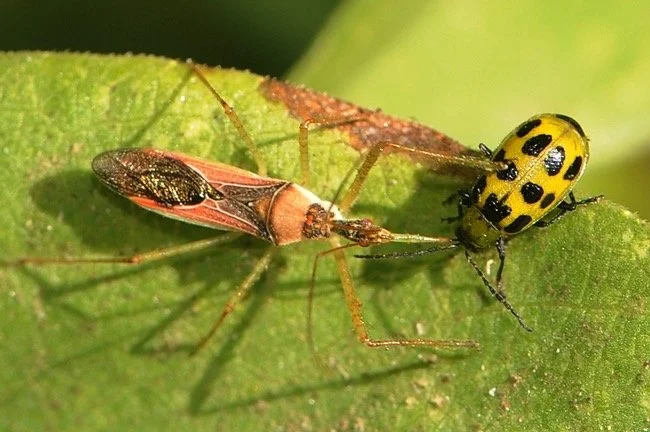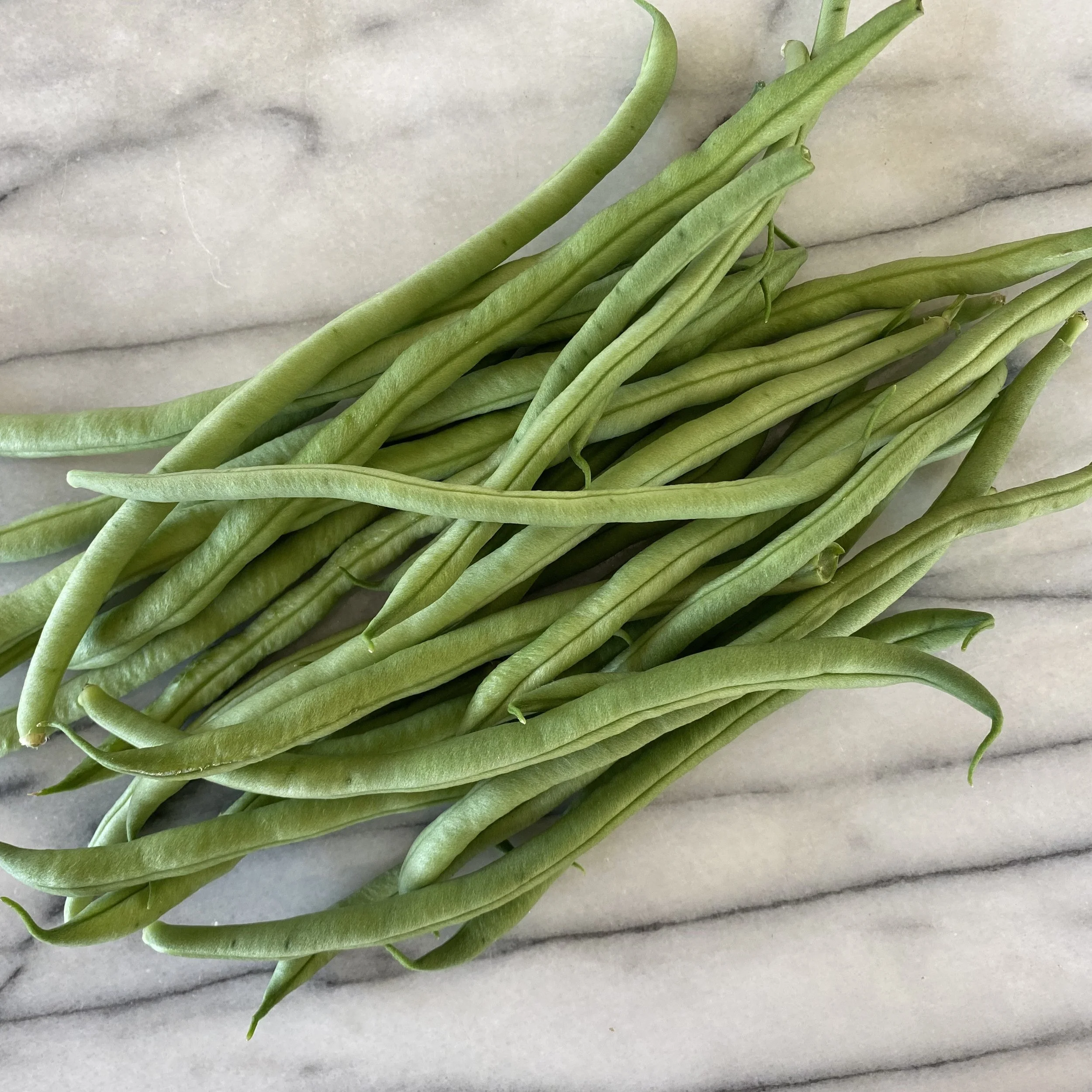Cucumber Beetles
What the Problem Looks Like: Holes, skeletonized areas on leaves, flowers. Pollen eaten. Chewed leaves.
Probable Cause: Cucumber beetles. Greenish, yellowish beetles, 1/4 inch long with black spots, black head.
Source: The California Garden Web (University of California) on Beans
Well, it looks like I have cucumber beetles, again. I was away for a week on vacation and came home to view the damage. This is the worst area of my dry shell bean plants (black beans, cranberry beans, tiger eye beans and yellow Indian woman beans). The plants are flowering, but still there has been decent development of beans.
I’ve diligently looked for the cucumber beetles early in the morning when they’re less active but they’re not to be found. Could predators like the assassin bug have feasted on them? Have they moved on as I’ve read they sometimes do?
Cucumbers, squash, zucchini and melons are favorites of the cucumber beetle, though this year they seem to prefer the beans in my garden. Unfortunately, cucumber beetles are vectors for mosaic virus and bacterial wilt which are incurable.
Planting flowers with your vegetables can attract beneficial insects which are soldiers in the pest wars. This season I have a lovely Chocolate Lace Flower (Floret) planted next to some of my beans. Another strategy is to use a row cover until the plants begin to flower. I’m less enthused about that option.
The GrowVeg website has some useful information about Spotted Cucumber Beetles. Also check the University of California’s UC-ANR website and the UC-IPM site. State extension websites in your region may offer more helpful prevention and control strategies.
I’m hope for a plentiful harvest of my dry shell beans.









